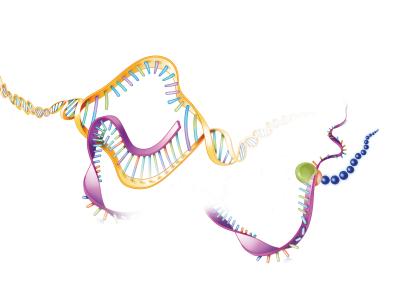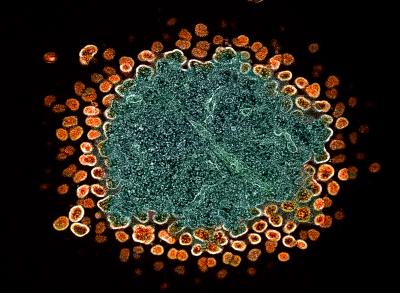The National Center for Advancing Translational Sciences (NCATS) and participating NIH institutes and centers (ICs), including NIAID, seek applications for pilot projects to elucidate a role for understudied proteins in rare diseases through the Pilot Projects Investigating Understudied Proteins Associated with Rare Diseases (R03, Clinical Trial Not Allowed) notice of funding opportunity (NOFO).
For the purpose of this NOFO, eligible proteins are those that are associated with rare disease through data mining of the NCATS Genetic and Rare Diseases Information Center, considered understudied (i.e., those proteins that lack small molecule binders and have limited biological characterization and have low numbers of associated publications), and exist within a protein family that is traditionally considered druggable.
The NOFO lists nearly 900 such proteins across the following categories:
- Enzymes
- Epigenetic Proteins
- GPCRs
- Ion Channels
- Kinases
- Transcription Factors
- Transporters
Refer to the NOFO above for the full list.
Research Objective
The NOFO’s purpose is to promote preliminary data around the role of understudied proteins associated with rare diseases. It will also support research to characterize new targets for treatment of human disease among the understudied proteins of the Druggable Proteome.
Small Research Grant (R03) Mechanism
Small research grants (R03) provide flexibility for initiating discrete, well-defined projects that can be finished in 1 year and only require limited levels of funding. This program supports different types of projects such as:
- Pilot or feasibility studies.
- Small, self-contained research projects.
- Development of research methodology.
- Development of assays to support compound screening projects.
- Development of human cell or animal-based models.
These awards will support generating preliminary data and tools around eligible understudied protein(s) with the intent of elucidating the function of these proteins in the context of rare disease and obtaining sufficient preliminary data or research resources for subsequent grant applications and/or drug discovery projects. These grants cannot be renewed.
Relevant Research Projects
This NOFO accepts different types of projects with the intent of generating preliminary or validation data including:
- Isolation and purification of understudied proteins and initial in vitro characterization.
- Characterization of cell- and tissue-specific protein expression, localization, and function of understudied protein(s) in native environments.
- Verification or placement of understudied protein(s) in signaling cascades, including upstream signals and downstream activities.
- Preclinical animal studies of understudied protein(s) that help to illuminate the role of an understudied protein in the context of human disease.
- Use of novel tools to validate preliminary disease or physiological associations with understudied proteins in animal models, biomimetic systems, or ex vivo human samples.
- Development of accessory reagents (e.g., antibodies, peptide fragments, labeled versions of the protein) for use in downstream studies to generate preliminary data.
- Assay development, optimization, and validation with the intent of using these assays for further study of selected understudied protein(s).
- Use of data mining and experimental validation to analyze public data resources to identify and study protein-protein interaction networks or generate hypotheses about the function of understudied protein(s).
- Studies to identify endogenous ligands for understudied proteins that could lead to study of preliminary structure-activity-relationships.
- Structure determination or preparation of understudied proteins for structure determination and characterization by x-ray crystallography, cryo-electron microscopy, or similar approaches.
Conversely, your application will be nonresponsive if you propose the following:
- Projects that include clinical trials.
- Projects where the majority of the proposed work focuses on proteins outside of those listed in the NOFO.
- Applications that propose clinical drug development studies for understudied protein(s).
- Applications not studying a rare disease (i.e., 200,000 or fewer patients in the United States).
Award Information and Deadline
Application budgets are limited to $100,000 in direct costs (excluding subcontract facilities and administrative costs) for 1 year and need to reflect the actual needs of the proposed project. The maximum project period for an application submitted under this NOFO is 1 year.
Application deadlines follow NIH’s standard due dates, i.e., February 16, June 16, and October 16, by 5 p.m. local time of the applicant organization through 2027.
Contact Information
Send any inquiries to Dr. Maggie Morris Fears, NIAID’s scientific/research contact, at maggie.morrisfears@nih.gov or 301-761-5444.



